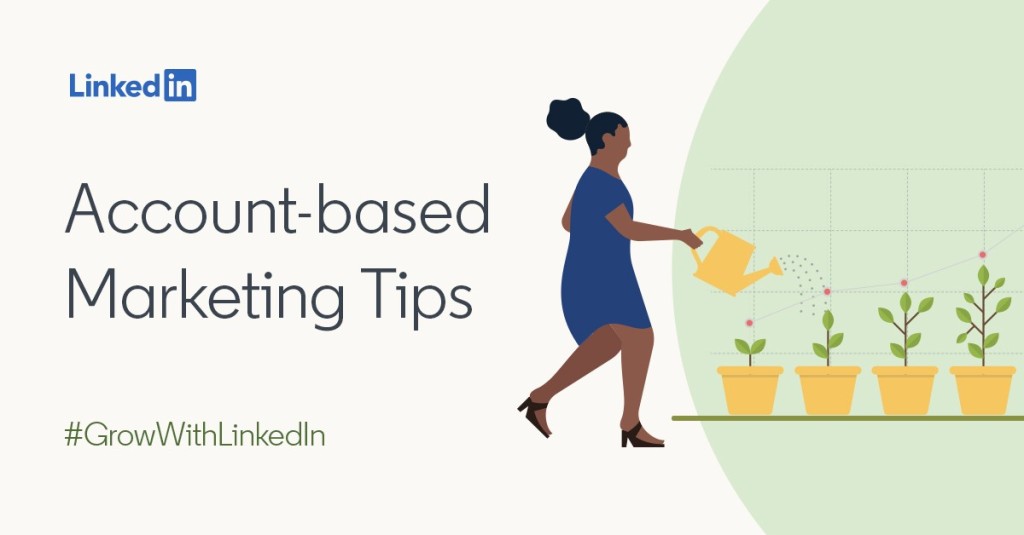5 steps to build an Account-based marketing strategy
Account-Based Marketing (ABM) is one of the most exciting concepts in marketing today. Designing a marketing strategy for a specific account or group of accounts can deliver dramatic results. It can bring sales and marketing closer together, increase the rate at which your Marketing Qualified Leads (MQLs) convert to sales opportunities, and make it easier to measure the contribution your marketing team makes to closed deals and revenue. However, for ABM to achieve these things, you need to approach it in the right way – and lay the foundations for success.
LinkedIn is an ideal platform for building these foundations because of the data available to plan your ABM strategy, target the specific accounts in your plan, and track the engagement that results. Because LinkedIn is also a highly effective sales platform, it’s easy for your colleagues to follow up on opportunities as they emerge.
Here are the five steps to take first, in order to start unlocking the potential of ABM on LinkedIn:
Despite being one of the most frequently used terms in B2B marketing at the moment, account-based marketing can have different meanings for different people. The crucial first step in building your ABM strategy is to align with your sales team on what ABM should mean for your business.
One-to-One: The first type of ABM involves treating large, priority accounts as a market of one, and developing bespoke marketing strategies specifically for each of them. This will involve working very closely with the sales team members who know each business, and often working with stakeholders within the business as well. For example, you might work with the CIO of an account that you’re targeting, to help them convince internal stakeholders of the value of investing in your software solution. This type of ABM is highly involved and has to be focused on a handful of accounts where sales has identified significant opportunities to grow your business.
One-to-Many: The second type of ABM involves activity that’s targeted at a larger list of accounts that share common characteristics. You can create marketing activity that’s personalised to particular stakeholders that you know will play a key role in decision-making across all of these accounts. You might run one campaign for Heads of IT who will sign off on buying your software solution, another for the developers who will be implementing it, and another for the CFOs who will be signing the cheques. This second type of ABM is much more scalable.
Discuss your options with sales before you start to build your ABM strategy. Doing so will help you work out which version of ABM will be most appropriate: are your business’s opportunities focused on a few target accounts or is it more important to get opportunities moving at scale? It might be that there’s value in developing both forms of ABM – but if so, you want to clarify which accounts require which approach.
You can’t have account-based marketing without a strategic discussion about the value of different accounts and why you are targeting them. One of the great advantages of ABM is the way that it aligns sales and marketing activity around shared priorities and objectives. Spending time with sales to develop a list of target accounts, and clarifying the reasons why you need to prioritise them, are an important part of this process.
It might be that you are focusing on a handful of accounts and you need a detailed understanding of each – or it could be that sales have a much longer target account list that it’s a priority to engage. Either way, having the list itself is just the starting point. It’s important that everyone understand why accounts make it onto the list – and what your objectives for them are.
Once you’ve earmarked high-value accounts for the ABM programme, it’s time to profile these businesses, identify each of the key stakeholder audiences, and develop a plan for them. Once again, working with sales is crucial. For priority accounts, you might well be developing campaigns targeted at specific influencers for buying decisions. For wider ABM programmes, you can aim to develop segments and personas that apply across all of the businesses in the account list.
If your sales team is using LinkedIn Sales Navigator, you’ll have a range of tools to help with profiling accounts and planning your approach to them. These include the Buyer Circle feature, which identifies all of the decision-makers and influencers likely to be involved in a purchase decision.
Clarifying on your objectives for your ABM programme will help you decide on the best way to measure marketing’s contribution. If your sales team already has a relationship with people at the account, and you are targeting other influencers to help move a deal along, then your objective might just be engagement. You can track the level of engagement your activity generates among your tightly targeted audience, confident in the knowledge that this is influencing future revenue. If you’re targeting a wider list of accounts then you might be contributing at an earlier stage of the consideration journey and helping to generate leads for sales. Account-based marketing can have very different objectives depending on how you drew up your target account list to begin with.
Whichever objectives you’re aiming for, it’s worth putting a plan in place for how sales will capitalise on the ABM activity. LinkedIn Sales Navigator can provide them with alerts whenever employees at a target account engage with your content. You can also design ABM campaigns around a call to action to connect with a relevant sales rep. Using video to introduce a member of your sales team as the expert on a key issue can lay the groundwork for a seamless handover to sales.
Once you’ve laid the foundations for your ABM strategy, you can use LinkedIn’s Campaign Manager powerful account targeting capabilities to start executing on it. Upload your specific list of target accounts to use as the basis for your campaign. You can then add further targeting parameters based on LinkedIn profile data, to tailor activity to different functions or job titles within those accounts. Working company names or people’s job titles into Sponsored Content headlines can often help to increase engagement.
Account-based marketing can seem intimidating if you don’t have vast amounts of customer data or sophisticated in-house analytics. However, it doesn’t have to be. LinkedIn provides a great foundation for any business looking to leverage the advantages of ABM, even if they don’t have extensive data of their own. Through the platform, you’ll be able to access most of the insight that you need to start prioritising accounts, identifying the key people to target and delivering personalised content at scale. As your ABM programme develops, you’ll be able to learn lessons, track what works, and find additional tools that you can use. It all starts with building those essential ABM foundations – and LinkedIn is a great place to do it.
Topics: Account-based marketing Trends, tips, and best practices LinkedIn Ads
Related articles



